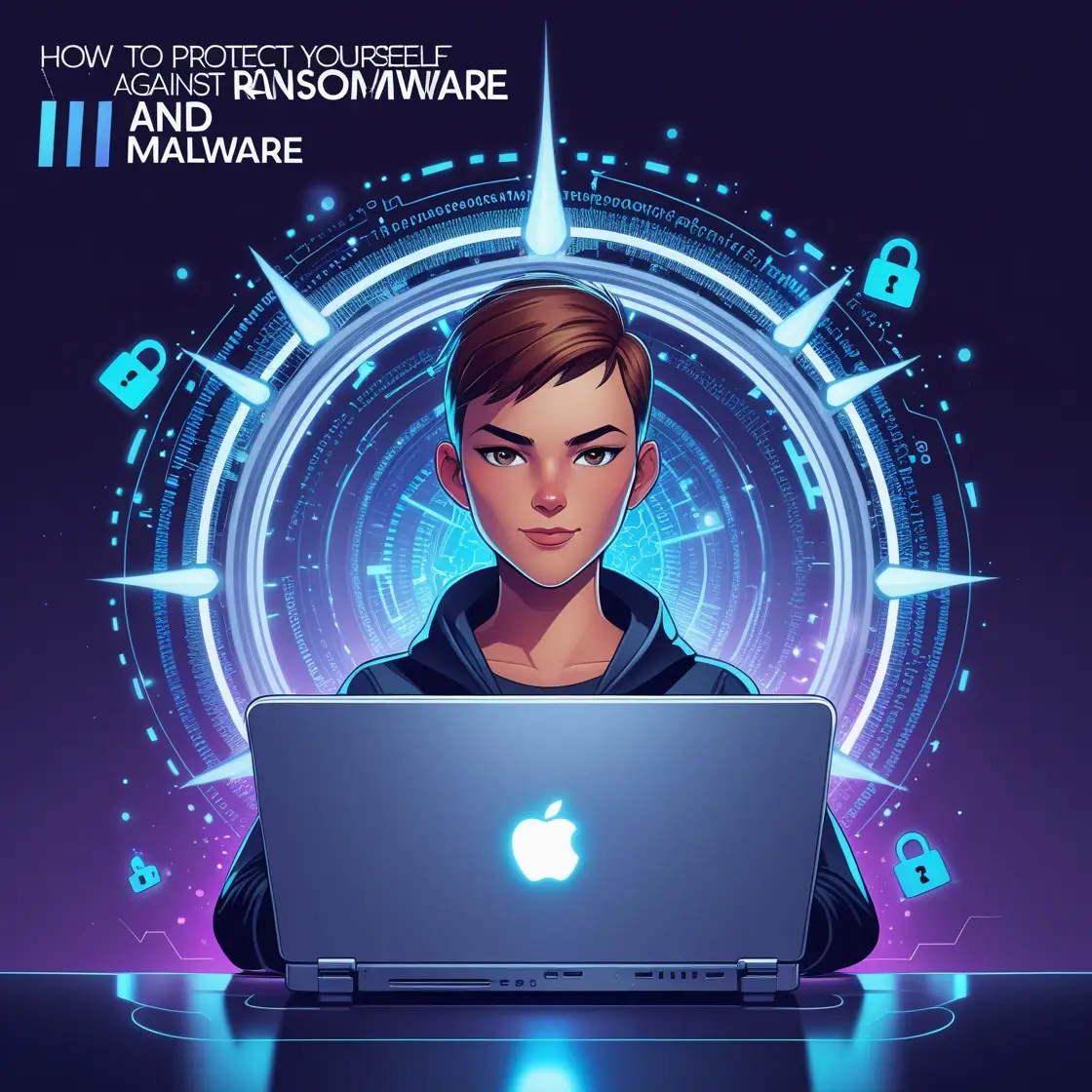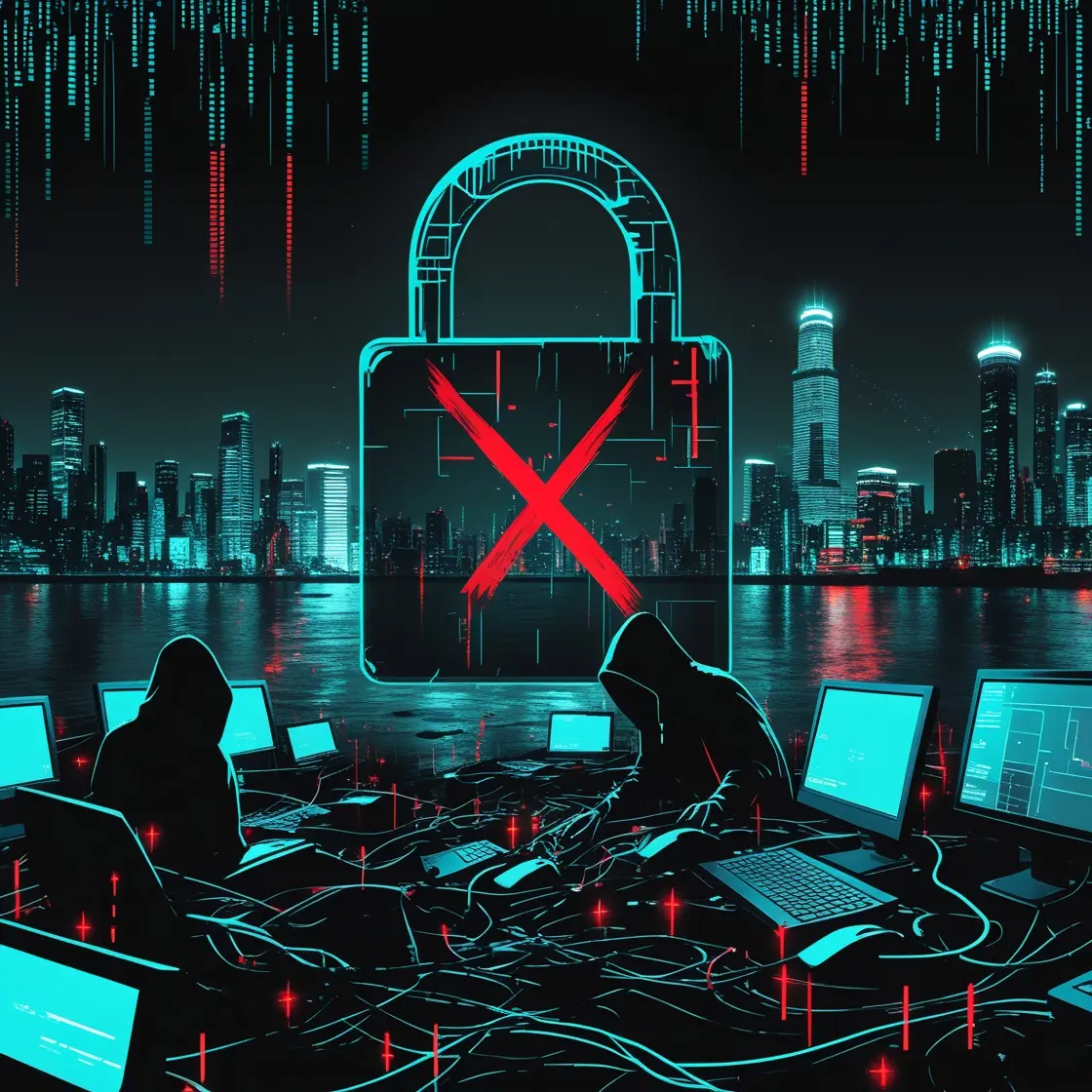Understanding Ransomware and Malware Attacks: Ways of Protecting Yourself in the New World
Cyber security threats are developing progressively faster, and ransomware and malware attacks are among the most common and significant types of cyber attacks at the present moment. From just an end-user consumer to a multinational firm, no one is safe from these risks. This blog aims at providing a ride through the world of malware and ransomware attacks in cyber security, their outcomes, preventions, and legalities locally and globally including Pakistan. If you are searching for a Professional Advocate, Aneel Irshad Khan is on hand to help you.
What is Ransomware?
Ransomware is a type of malware that encrypts computer user’s files or restricts access, and demands a ransom be paid when the user’s file or computer is to be released. Ransomware attackers tend to exploit victims through a malware attack that locks down files before demanding monetary payments usually in bitcoin as a form of decryption code.
Key Characteristics of Ransomware:
- Encryption: Methods are made impossible.
- Payment Demand: Typically, one must use cryptocurrency for anonymity.
- Threats: Most attacks may also involve threats of data disclosure.

What is Malware?
Malware, derived from malicious software, is a more general class of unwanted programs that are intended to cause damage, destroy or invade computers. They subdivide malware into ransomware, viruses, worms, trojans, and spyware even though ransomware falls under the former category.
Types of Malware:
- Viruses: Hang themselves on legal documents or applications.
- Worms: Viral programs which can self generate new instances of a specific application without user action.
- Trojans: As you will see later in this discussion, often they are disguised as legitimate software.
- Spyware: Secretly collects user data.
- Adware: Sends unnecessary advertisements that people do not have any interest in.
Difference Between Malware and Ransomware Attack
Malware and ransomware attacks are serious cyber threats with distinct purposes and impacts. Malware, or “malicious software,” includes viruses, worms, Trojans, spyware, and ransomware, designed to exploit or harm systems by stealing data, spying, or causing disruption. Ransomware, a specific type of malware, directly encrypts files or locks users out of their systems, demanding payment for access restoration. While malware often operates covertly, ransomware is overt, causing immediate disruption and financial demands. Examples include malware like Emotet and ransomware such as Ryuk and LockBit. Both highlight the need for robust cybersecurity to prevent and mitigate risks.

Examples of Ransomware and Malware that has happened in the real World:
- WannaCry Ransomware (2017): When launched, more than 200,000 computers were infected globally and the exploit used was from a vulnerability in Windows.
- Petya Ransomware (2017): Lay down on global business specifically targeting big manufactured aiming at damaging worth billions of dollars.
- Maze Ransomware: They were notorious for stealing data before encryption, and if blackmail was required, for threatening to make the data public.
- Colonial Pipeline Attack (2021): Interrupted fuel supplies in the US hence creating a planned buying spree.
Malware And Ransomware Attacks In Office 365
Malware and ransomware attacks pose serious risks to Office 365 users, targeting vulnerabilities through phishing emails, malicious links, and compromised attachments. These attacks aim to access accounts or encrypt data for ransom, exploiting Office 365‘s widespread use and integration with business processes. To mitigate these threats, organizations should enable multi-factor authentication (MFA), use advanced threat protection (ATP) tools, and train employees to recognize phishing attempts. Regular software updates, strong security configurations, and frequent data backups are also critical. Proactively addressing vulnerabilities helps safeguard Office 365 environments and ensures operational resilience.
Mitigating Malware and Ransomware Attacks
Mitigating malware and ransomware attacks requires a multi-layered cybersecurity approach combining technology, processes, and awareness. Organizations should deploy firewalls, intrusion detection systems, and endpoint protection software to block threats at multiple entry points. Regular software updates and patch management are essential to address vulnerabilities. Strong access controls, including multi-factor authentication (MFA) and least-privilege principles, help prevent unauthorized access. Employee training is vital, as human error often leads to incidents; programs should focus on recognizing phishing attempts and suspicious downloads. Routine data backups stored offline enable quick recovery in case of an attack. Periodic risk assessments and penetration testing further identify and address potential weaknesses. By integrating these measures, businesses can reduce the risk and impact of malware and ransomware, safeguarding sensitive systems and ensuring operational resilience. A proactive approach is critical in combating these ever-evolving cyber threats effectively.
Ransomware Simulation: A Tool for Preparedness
In another similar survey, other many organizations employ ransomware simulating tools so as to enhance their protection against the particular threat. These exercises mimic actual ransomware attacks, and help firms to find potential threats and improve protection measures against them.

The White House Releases a Cyber security Notice: How to protect yourself against Ransomware and Malware?
- Use Antivirus Software: Take your time to future good anti-virus and anti-malware software.
- Update Regularly: Make sure that your operating system and all your software programs are current.
- Backup Your Data: It is recommended to back up important files to another drive or to a cloud every now and then.
- Avoid Phishing and Ransomware Scams: It’s with important to refrain from opening emails from strangers, links and particularly attachments.
- Implement Strong Passwords: There should be the use of strong and different passwords on various accounts.
- Educate Yourself and Your Team: There should be periodic trainings in matters relating to cyber security should be conducted.
Ransomware and Malware: Facts, Information and FAQ
What is the difference between a malware and a ransomware attack?
Malware is the general term used to describe a class of program that is designed to be damaging to systems or data. Ransomware is subcategory of malware that gets into a target system and encrypts data in the computer, before asking the owner to pay for the data to be decrypted.
What are malware attacks?
Malware attacks refer to instances whereby an individual, group or system uses malicious software in an effort to cause harm, destroy or to gain unauthorized access.
What has been a type of malware?
One of malicious softs is WannaCry ransomware, it encrypted files on the devices of the organization.
The main intention of malware is what?
The primary objective of malware is to cause mischief or malice to the systems it interacts with, gather data, interrupt processes, or facilitate intrusion.
Can a firewall able to detect malware?
Yes, firewalls can detect and block some types of malware because it means that a firewall can monitor all the network traffic.
How do I remove malware?
For protection against malware use authentic anti-malware software to remove the infections. If the situation is particularly horrible and worsening, do not hesitate to contact a specialist.
What is the best protection from malware?
To protect oneself, one has to employ updated antivirus; perform system patches; avoid clicking on the links that look suspicious; and last but not the least, backing up data.
Ransomware and Malware Countermeasures – The Foreign Law Perspective
Countries around the world are working to strengthen their cyber security laws and frameworks:
- European Union (EU): The General Data Protection Regulation (GDPR) enacted in the EU will sanction any subsequent leaks or breaches and emphasizes tight cyber security.
- United States: The Cyber security and Infrastructure Security Agency gives advice on measures and best practices and offers help in case of an attack. Ransomware cases are investigated by the FBI.
- United Nations: The UN focus on cybercrime international cooperation by signing deals such as the Budapest Convention on Cybercrime.
- Global Collaboration: For example, No More Ransom, involving the police and IT companies, share free decryption tools.

Legal Solutions in Pakistan
Pakistan has made strides in addressing cybercrime through legislation and enforcement:
Prevention of Electronic Crimes Act (PECA), 2016: Pakistan’s main law against cybercrime is contained in the Performing of Computer Operations which prohibits acts involving unauthorized access, theft, and ransom. Key provisions include:
- Section 3: RAM conventionalism access of information systems.
- Section 4: Illegitimate reproducing or transmitting of data.
- Section 10: Terrorist cyber threats, and threats to industrial systems and structures.
Federal Investigation Agency (FIA): The Cyber Crime Wing at FIA is responsible for investigation and trials of cybercrimes.
Reporting Mechanisms: Victims can report incidents through the FIA’s cybercrime reporting portal or by calling on their cybercrime helpline.
In specific regarding the legal advice on cybercrime in Pakistan, the professional that you can contact is Advocate Aneel Irshad Khan.
Conclusion
Ransomware and malware attacks pose a major risk within the current trends of a growing global interconnected environment. The best way to fight these problems is the awareness, prevention, and taking legal actions. Some fundamental actions by the international community along with a firm national legislation like Pakistan’s PECA make it possible to track cyber criminals.
If you are in a circumstance where you are in a legal problem concerning ransomware/malware or any related issue or need an advice, contact Advocate High Court Aneel Irshad Khan to get his written opinions. Today’s precautions protect from a cyber disaster in the future.




